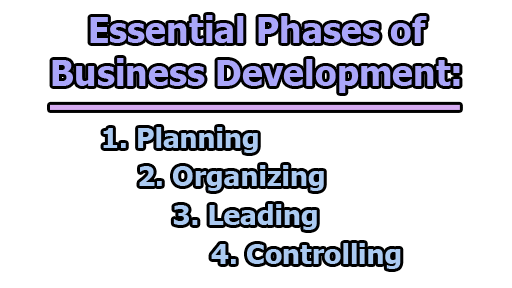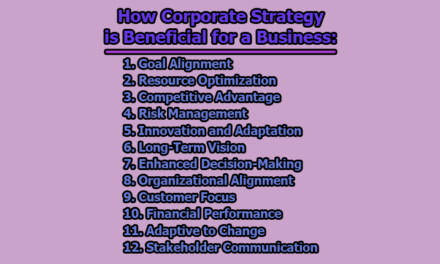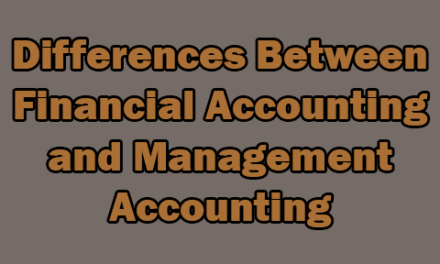Essential Phases of Business Development:
Business development is a dynamic process that involves strategic planning, organization, leadership, and control. In the competitive landscape of today’s global economy, businesses must navigate through various stages to thrive and grow. This article delves into the essential phases of business development, providing a comprehensive guide to understanding and implementing each stage effectively. The four crucial phases are Planning, Organizing, Leading, and Controlling.
1. Planning:
Planning is the foundation of successful business development. It involves setting goals, defining objectives, and devising strategies to achieve them. The planning phase is a meticulous process that requires a thorough understanding of the market, industry trends, and the internal capabilities of the business.
1.1 Setting Goals and Objectives: Business development begins with the establishment of clear and achievable goals. These goals provide a sense of direction for the organization, guiding decision-making processes. Objectives, on the other hand, are specific, measurable targets that contribute to the achievement of broader goals. Both goals and objectives must align with the overall mission and vision of the business.
1.2 Market Analysis: A comprehensive analysis of the market is crucial for effective planning. This involves studying customer needs, analyzing competitors, and identifying opportunities and threats. Market research allows businesses to make informed decisions about product development, pricing strategies, and target audiences.
1.3 SWOT Analysis: A SWOT analysis (Strengths, Weaknesses, Opportunities, Threats) is a powerful tool in the planning phase. It helps businesses identify internal strengths and weaknesses, as well as external opportunities and threats. This analysis informs strategic decision-making and allows businesses to capitalize on their strengths while addressing potential challenges.
1.4 Strategic Planning: Strategic planning involves formulating long-term plans that align with the business’s overall objectives. This includes identifying key initiatives, allocating resources effectively, and creating a roadmap for the future. A well-defined strategy provides a framework for decision-making and helps the organization stay focused on its mission.
2. Organizing:
Once the planning phase is complete, the next essential step is organizing. Organizing involves structuring the business, defining roles and responsibilities, and establishing efficient workflows. A well-organized business is better equipped to implement its strategies and achieve its goals.
2.1 Organizational Structure: The organizational structure defines the hierarchy and relationships within the business. It determines how information flows, who reports to whom, and how tasks are assigned. Choosing the right organizational structure is critical for ensuring clear communication, accountability, and efficient decision-making.
2.2 Division of Labor: Effective organization requires a clear division of labor. This involves assigning specific tasks and responsibilities to individuals or teams based on their skills and expertise. A well-thought-out division of labor enhances productivity and ensures that each employee contributes to the overall success of the business.
2.3 Resource Allocation: Organizing also involves allocating resources such as finances, personnel, and technology. Proper resource allocation ensures that the business can operate smoothly and pursue its objectives without unnecessary constraints. This phase requires careful consideration of budgeting, staffing, and technology investments.
2.4 Establishing Workflows: Workflows define the sequence of tasks and activities necessary to accomplish specific goals. Establishing efficient workflows streamlines processes, reduces bottlenecks, and enhances overall productivity. Businesses must continually assess and optimize workflows to adapt to changing circumstances and maintain a competitive edge.
3. Leading:
Leadership is a critical aspect of business development that involves guiding, motivating, and inspiring individuals to achieve common goals. Effective leadership fosters a positive organizational culture, encourages innovation, and ensures that employees are aligned with the business’s mission.
3.1 Leadership Styles: Different situations call for different leadership styles. Whether it’s authoritative, democratic, transformational, or laissez-faire, leaders must adapt their approach to suit the needs of the organization and its employees. Understanding the strengths and weaknesses of each leadership style allows leaders to navigate challenges effectively.
3.2 Communication: Clear and open communication is fundamental to effective leadership. Leaders must convey the business’s vision, values, and expectations to employees. Additionally, fostering a culture of open communication encourages collaboration and ensures that everyone is on the same page regarding goals and objectives.
3.3 Motivation and Team Building: Motivating employees is a key responsibility of leaders. This involves recognizing and rewarding achievements, providing constructive feedback, and creating a positive work environment. Team building activities are essential for fostering collaboration, trust, and a sense of belonging among team members.
3.4 Decision-Making: Leaders are responsible for making critical decisions that impact the organization. Decision-making involves analyzing information, considering alternatives, and choosing the most viable option. Leaders must be decisive, yet open to input from their team, fostering a collaborative decision-making process.
4. Controlling:
The controlling phase is about monitoring, evaluating, and adjusting processes to ensure that the business is on track to meet its objectives. This phase is essential for maintaining efficiency, identifying areas for improvement, and responding to changes in the business environment.
4.1 Performance Measurement: Controlling begins with the establishment of key performance indicators (KPIs) that align with the business’s goals. Regularly measuring and evaluating these indicators allows leaders to assess performance, identify areas of success or concern, and make informed decisions to drive improvement.
4.2 Feedback and Continuous Improvement: Providing feedback is crucial for employee development and overall organizational improvement. Constructive feedback highlights areas of excellence and areas needing improvement, promoting a culture of continuous learning and development. Businesses must be agile and adaptable, continuously seeking ways to enhance their processes and stay ahead in a rapidly changing environment.
4.3 Budgetary Control: Controlling also involves managing the financial aspects of the business. This includes budgeting, tracking expenses, and ensuring that financial resources are allocated effectively. Budgetary control allows businesses to make informed financial decisions and prevents overspending.
4.4 Risk Management: Identifying and mitigating risks is an integral part of the controlling phase. Businesses must assess potential risks, develop risk management strategies, and be prepared to adapt to unforeseen challenges. Proactive risk management ensures the business can navigate uncertainties without compromising its overall objectives.
In conclusion, the essential phases of business development – Planning, Organizing, Leading, and Controlling – form a holistic framework for organizational success. Each phase is interconnected and plays a vital role in the overall growth and sustainability of a business. By carefully navigating through these phases, businesses can adapt to changing market conditions, capitalize on opportunities, and build a foundation for long-term success in today’s competitive business environment. Implementing effective strategies in each phase requires thoughtful consideration, collaboration, and a commitment to continuous improvement, ultimately leading to the realization of organizational goals and aspirations.

Library Lecturer at Nurul Amin Degree College










